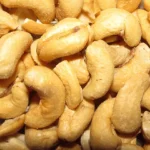Recent studies have raised significant concerns over the presence of chlormequat, a plant growth regulator linked to reproductive issues, in oat-based cereals such as Cheerios and Quaker Oats.
Chlormequat chloride, utilized to control plant growth by reducing stem height, has been detected in a substantial percentage of oat and wheat products in the United States. This discovery prompts a critical examination of regulatory decisions and the potential health implications for consumers.
The EPA's Controversial Stance
In a contentious move, the Environmental Protection Agency (EPA) proposed in April last year to permit the use of chlormequat on oats, barley, wheat, and triticale grown in the United States, despite its prior limited approval for ornamental plants only. This decision, influenced by an application from chlormequat manufacturer Taminco, raises questions about the prioritization of agricultural efficiency over public health. The increasing allowable levels of chlormequat in food, initiated in 2018 and expanded in 2020, underscore a concerning trend of regulatory relaxation that warrants scrutiny.
Widespread Exposure and Health Risks
Investigations have revealed that four in five Americans tested positive for chlormequat exposure, with the chemical detected in 92% of oat-based foods purchased in 2023, including prominent brands like Quaker Oats and Cheerios. The Environmental Working Group (EWG), which conducted these studies, highlights the urgent need for reevaluating safety thresholds, given the evidence of reduced fertility and developmental issues in animal studies at doses below current regulatory limits. This widespread exposure underscores the potential for significant health risks, particularly affecting reproductive health and fetal development. The findings contribute to ongoing concerns about chemical exposure and its role in the broader context of reproductive health challenges, offering critical global fertility crisis insights. Scientists warn that even low levels of chlormequat may compound existing environmental factors contributing to declining fertility rates worldwide. As such, there is growing advocacy for stricter regulatory measures and increased public awareness to mitigate these potential health risks.
Organic Alternatives and Consumer Advice
In light of these findings, consumers are advised to consider organic oat products, which are grown without toxic pesticides such as chlormequat and glyphosate. The lower detection rate of chlormequat in organic oat-based products offers a safer alternative for those concerned about chemical exposure. This recommendation aligns with a broader call for increased vigilance and stricter regulatory oversight regarding the use of chemicals in food production.
Calls for Regulatory Reevaluation and Transparency
The discovery of chlormequat in a high percentage of oat and wheat-based foods has sparked calls for a comprehensive reevaluation of its safety and regulatory status. Advocacy groups and researchers are urging the EPA and food safety authorities to reconsider the recent decisions to allow chlormequat in children's foods and to conduct more rigorous testing for pesticides in the agricultural supply chain. This situation highlights the need for a balanced approach that considers both agricultural benefits and potential health risks, ensuring that consumer safety is not compromised in the pursuit of higher yields.
A Community Perspective on Food Safety
The presence of chlormequat in popular oat-based cereals raises alarm bells for consumers and communities alike, prompting a reexamination of our food safety regulations and the chemicals we permit in our food supply. As we navigate the implications of these findings, it becomes increasingly clear that transparency, rigorous testing, and a precautionary approach are essential to protect public health and ensure the safety of our food.
For further details on this critical issue, visit The Epoch Times.

Lifelong bacon junkie. Lifelong internet fanatic. Hipster-friendly travel aficionado. Twitter lover. Avid food buff. Incurable travel trailblazer.













